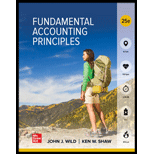
1.
Introduction:
Step-down method: The overhead costs of supporting incurred by the supporting department are allocated to other supporting departments and also the operating department based on the allocation base.
Allocation of the service department’s cost to the consuming department and the predetermined overhead rates in the operating department.
2.
Introduction:
Direct method: Under the direct method, the overhead costs incurred by the supporting department are directly allocated to the operating department.
Allocation of the service department’s cost to the consuming department using the direct method and the predetermined overhead rate.
3.
a.
Step-down method: The overhead costs of supporting incurred by the supporting department are allocated to other supporting departments and also the operating department based on the allocation base.
The amount of overhead cost for the job using overhead rates computed in parts 1 and 2.
3.
b.
Step-down method: The overhead costs of supporting incurred by the supporting department are allocated to other supporting departments and also the operating department based on the allocation base.
The reason the step-down method is a better base for computing the predetermined rates than the direct method.
Want to see the full answer?
Check out a sample textbook solution
Chapter 5 Solutions
FUND.ACCT.PRIN.
- Geisner Inc. has total assets of $1,000,000 and total liabilities of $600,000. The industry average debt-to-equity ratio is 1.20. Calculate Geisner's debt-to-equity ratio and indicate whether the company's default risk is higher or lower than the average of other companies in the industry.arrow_forwardI need guidance on solving this financial accounting problem with appropriate financial standards.arrow_forwardI want to this question answer for General accounting question not need ai solutionarrow_forward
- Linton Corp. recently reported an EBITDA of $18.2 million and net income of $3.5 million. It also had interest expense of $2.7 million, and its corporate tax rate is 25%. What was Linton's depreciation and amortization expense?arrow_forwardCan you help me solve this general accounting problem with the correct methodology?arrow_forwardAt September 1, 2010, Kern Enterprises reported a cash balance of $45,000. During the month, Kern collected cash of $15,000 and made disbursements of $25,000. At September 31, 2010, what is the cash balance? A. $25,000 credit B. $35,000 credit C. $60,000 debit D. $35,000 debitarrow_forward
- Hi expert please given correct answer with general accounting questionarrow_forwardThe total estimated cost for materials and labor are $1,512,000 and $1,984,000, respectively.arrow_forwardPlease provide the solution to this financial accounting question with accurate financial calculations.arrow_forward
- Principles of Accounting Volume 1AccountingISBN:9781947172685Author:OpenStaxPublisher:OpenStax College
 Cornerstones of Financial AccountingAccountingISBN:9781337690881Author:Jay Rich, Jeff JonesPublisher:Cengage Learning
Cornerstones of Financial AccountingAccountingISBN:9781337690881Author:Jay Rich, Jeff JonesPublisher:Cengage Learning Financial And Managerial AccountingAccountingISBN:9781337902663Author:WARREN, Carl S.Publisher:Cengage Learning,
Financial And Managerial AccountingAccountingISBN:9781337902663Author:WARREN, Carl S.Publisher:Cengage Learning,  Financial Accounting: The Impact on Decision Make...AccountingISBN:9781305654174Author:Gary A. Porter, Curtis L. NortonPublisher:Cengage Learning
Financial Accounting: The Impact on Decision Make...AccountingISBN:9781305654174Author:Gary A. Porter, Curtis L. NortonPublisher:Cengage Learning Financial AccountingAccountingISBN:9781337272124Author:Carl Warren, James M. Reeve, Jonathan DuchacPublisher:Cengage Learning
Financial AccountingAccountingISBN:9781337272124Author:Carl Warren, James M. Reeve, Jonathan DuchacPublisher:Cengage Learning Intermediate Accounting: Reporting And AnalysisAccountingISBN:9781337788281Author:James M. Wahlen, Jefferson P. Jones, Donald PagachPublisher:Cengage Learning
Intermediate Accounting: Reporting And AnalysisAccountingISBN:9781337788281Author:James M. Wahlen, Jefferson P. Jones, Donald PagachPublisher:Cengage Learning





